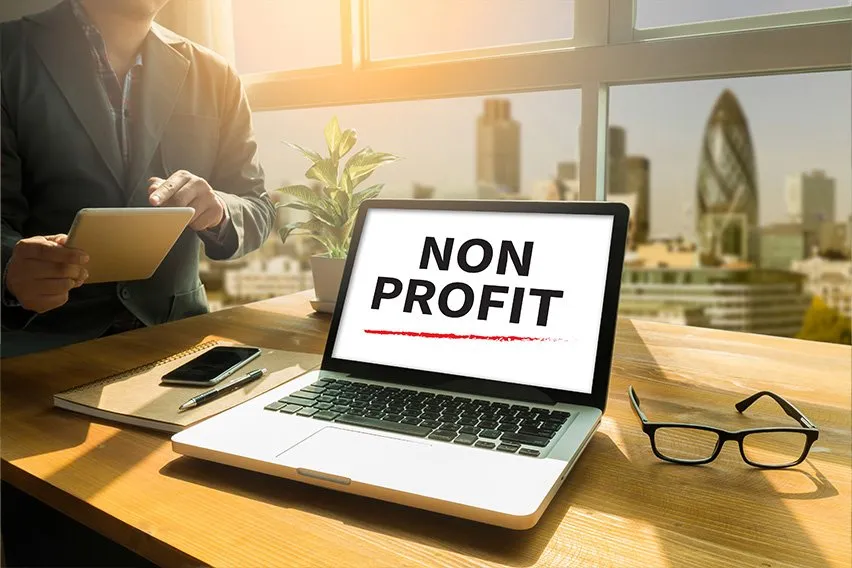Is My Business Idea Good Enough? Test It Before It Fails

It’s easy to feel excited when a cool business idea pops into your head, but before you drop everything to pursue a new venture, you should sit down and ask yourself, “Is my business idea good enough?”
Leaving everything to chance can put you in an awkward situation later on. After all, 90% of startups fail within the first few years.
Thankfully, there are a few tried-and-tested ways to evaluate your business idea and see if it’s worth your investment. We’ll even share tips from successful entrepreneurs about how they come up with new concepts.
Are Your Business Ideas Worth Pursuing?
A lot of the businesses that became successful in the past decade were born from unconventional concepts. One example is Airbnb: when the co-founders pitched the idea of having travelers sleep in strangers’ homes, “many investors shifted uncomfortably in their seats.”
Another example is PayPal, which launched in 1998. It became popular during a time when the Internet was very new and nobody wanted to share their bank information online. But due to its aggressive marketing tactics and a strong partnership with eBay, the company was able to succeed. In the first quarter of 2020, PayPal’s net payment volume reached $190.57 billion, showing 19% year-on-year growth.
These success stories show that sometimes the best business ideas aren’t ones that are sure wins. But how can you tell if your idea is worth pursuing, even if no one believes you? Let’s dive in.

1. Flesh Out Your Concept
If you have a great idea for a product or service, one of the first things you should do is validate it. To do this, you need to ask yourself the following questions.
What Problem Will This Solve?
Josh Opperman, the founder of I Do Now I Don’t, established his business after his fiancée broke off their engagement and gave him back the ring.
Traditional jewelry stores weren’t willing to give him a good price for what he had bought, so he set out to build an online store that would allow him to sell the ring for more money. He knew other people would likely benefit from this idea, so he pursued it.
A good idea for a product or service solves a problem that exists.
Is It Something You’re Good At?
Even if you have a good idea, you have to do a reality check and evaluate if you have the skills to make a business come to life. For the first few months of running a startup, you’ll be doing everything yourself, so you better know what you’re getting into.
For example, tech companies are often established by people who are already good at programming. Interesting websites are made by people who are already skilled in web development.
Apart from skills, you have to ask yourself if you have the passion necessary to spend a good amount of time, energy and patience to make it work. If it’s something you’ll drop in a month or so, then it’s not worth it.
Are People Interested?
Now that you’ve identified a problem that you want to solve, you need to check if there are actually people who will benefit from what you want to offer with your business.
Check Google Trends to see if people search for the product or service you want to offer. Try different search terms and refine your idea based on the results.
Make sure you don’t rush this step—a lot of startups fail because they focused on developing products instead of assessing if people actually wanted it.
Another way to make sure your new business idea is worth pursuing is by organizing a focus group discussion. Gather a few people who represent your target customers and ask them about your business idea.
What Solutions Exist?
Even if you have a unique business idea, it’s likely that it competes with something that already exists. For example, rideshare apps like Lyft and Uber had to compete with taxi cabs. Amazon had to compete with brick-and-mortar stores.
Getting to know your competitors will help you assess if you’re just being another copycat or if you’re actually onto something brilliant with your business idea. Jeff Bezos once told Forbes, “We have to have a differentiated idea. It can’t be a ‘me too’ offering.“
Note that you don’t have to reinvent the wheel all the time. You can offer an existing product or service and add a minor, significant twist. In the business world, this is known as your unique selling proposition (USP).
One example of a company that built upon an existing product is Potato Parcel. The company sells potatoes that are printed with a customized message. It’s a very simple but exciting gift idea that friends won’t forget for years to come.
Keep in mind that your value proposition can come in various forms. It can be something that saves people time, or allows them to spend less on existing products or services. Or, it can also have a qualitative value proposition—your product or service can improve their lifestyles or raise their social status.
When you’re coming up with your USP, it’s also a good time to do a SWOT analysis. This strategic planning tool helps you analyze the strengths (what makes your business better than competitors), weaknesses (what puts you at a disadvantage), opportunities (what can help your business grow) and threats (what external factors can make your idea fail).
Is It Easy to Understand?
The best business ideas are those that are easy to understand. Not only will you be able to convince investors that your product or service is worth betting on, but you’ll also find it easier to market the idea to your future customers.
If you look at the most-funded Kickstarter campaigns, you’ll see that they all have one thing in common: they pitched products that people will want to buy without much convincing.
Are There Laws or Regulations Holding You Back?
Nobody wants to be on the wrong side of the law, so you need to be more careful if you’re planning to operate in a heavily regulated industry. Examples include businesses that offer tobacco or CBD.
While this doesn’t necessarily mean that you can’t be part of these industries, it would be easier if you’re already an insider. From the get-go, you should be quite familiar with the local and federal laws that you need to follow, as well as the regulatory requirements you need to comply with.
Is the Timing Right?
Some people claim that timing is one of the keys to success when it comes to starting a new business. In his TED Talk, Idealabs founder Bill Gross shares, “Timing accounted for 42% of the difference between success and failure.“
Then, he shares the story of one of his failed companies, Z.com. It was an online entertainment company that streamed online video content at a time when internet connections were unreliable.
Then, he cites YouTube, which launched during a time when people started signing up for stronger and faster broadband connections. He says that YouTube’s success largely hinged on the fact that it was perfectly timed.
Is It Sustainable?
It’s becoming increasingly clear that sustainability can be a key to success. If you have a business idea that rates high in terms of environmental and social impact, it’s likely that you can attract good investors and strong talent.
2. Test Your Business Idea
There are several ways to learn if people will be interested in your business idea. It’s easy to ask your friends or family, but you have to go beyond that.
For this, you’ll need to calculate your total addressable market (TAM). This refers to the overall revenue you can earn from selling a product or offering a service. It helps you assess if it’s worth funding a business idea or at least putting it in the pipeline.
There are several ways to calculate your TAM. Here are some of the approaches you can try.
Read Existing Research
Taking figures from industry insights can give you a more concrete idea about how much you can earn from your future business. Research advisory firms like Gartner, Forrester and IDC are quite useful for this purpose.
If experts feel that there’s still an untapped market, then that could be the validation you need.
Check Your Competitors
Competitor sales figures can help you figure out if there’s a strong demand for the product or service you want to offer. If they’re already struggling to stay afloat, then it’s likely that you’re pursuing a dud.
Conduct Surveys
Use tools like Google Forms to create online surveys you can share on social media. Give people a brief introduction about your product or service, and ask if they’d be willing to buy it should it hit the market.
But don’t limit the survey’s target audience to people in your personal network—post the survey on relevant Facebook groups and you’ll likely find your way to the right people.
Essentially, you should try to ask them questions like the following:
- Will you buy our product or sign up for our service?
- How much would you be willing to spend on our product/service?
- Where are you located?
- What’s your income level? How much disposable income do you have?
- What type of job do you have?
- Do you buy products or services that are similar to ours?
Note that when you’re conducting surveys to test if people would be willing to buy your product or service, you can’t just ask yes–no questions. Try following up with open-ended questions, such as, “Why?”
That way, you can eliminate false positives, and weed out people who are only saying they’d be willing to buy your product or service to be nice.
Sell Samples
When you’re planning to offer a new product, you can begin by producing a small batch and then selling them at trade or consumer shows. That way, you don’t need to make a significant investment to find out if your business idea will take off.
Most entrepreneurs don’t go all-in on a business idea unless they’ve already sold ten samples to their target demographic. That way, they know that there’s a significant interest in the product.
Consult Experts
Business consultants don’t just help existing businesses become more successful. They can also provide helpful advice to budding entrepreneurs on how they can launch a startup.
Gauge Consumer Reaction
Testing ideas online doesn’t have to be expensive. You can create well-designed landing pages that tell people about what you want to do and see if they’re interested. Promote the landing page using ads to drive traffic.
Similarly, you can produce a video about your future business and upload it on platforms like YouTube. If you get good reactions or comments, then you can take that as a green light.

3. Figure Out the Financials
Launching a business requires a financial investment. Get realistic about your goals and see if you have the means to fund it.
One of the first things you should ask yourself is how much your startup costs would be. Consider the following questions:
- If you plan on developing a product, how much would it cost to produce a prototype?
- If you’re offering a service, how much would it cost to pay for your staff and promote the service?
- How can you cut costs without compromising your USP?
- What is your ideal business model? How will you sell your products to your customers? How will you reach your target market?
Next, you can analyze sales figures from competitors so you can create a sales forecast. Compare it with your predicted costs and determine if you can stay afloat. At this stage, it would be helpful for you to learn how to do financial modeling.
Finally, you should plan how to acquire funding for your business. If you’re starting small, you can fund everything using your savings, by taking out a personal loan or using your credit card.
Those who need more funding for their startup may want to look at taking out a loan from banks, private investors or the government. You can even turn to crowdfunding sites like Kickstarter or Indiegogo.
If you believe that you can find funding for your business idea, then you can definitely try to make it happen.
Bet on Your Business Idea
Now that you know how to vet your business idea, it’s time to decide: Are you brave enough to make it happen? If your answer is yes, then the next logical step is proper execution. This involves learning how to manage a business, coming up with effective strategies and supporting its growth.
During the first few years of running a startup, it’s essential to keep costs low and keep track of your spending as closely as possible. You can use accounting software for startups like FreshBooks so you don’t have to hire additional staff just to make sure that your cash flow, revenue, spending and profits are recorded.
With the right tools, you won’t have any trouble running a startup and making your ideas come to life. Who knows? You might just strike gold.
RELATED ARTICLES

 How to Start a Real Estate Business: A Blueprint for Getting Started
How to Start a Real Estate Business: A Blueprint for Getting Started How to Start a Photography Business
How to Start a Photography Business The Ultimate Guide to Starting a Daycare Business
The Ultimate Guide to Starting a Daycare Business The Ultimate Guide to Finding Freelance Work Online
The Ultimate Guide to Finding Freelance Work Online How to Start a Successful Cleaning Business: No Experience Needed!
How to Start a Successful Cleaning Business: No Experience Needed! How To Start A Nonprofit In 8 Steps
How To Start A Nonprofit In 8 Steps